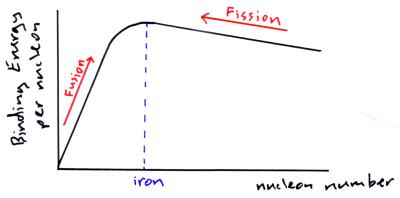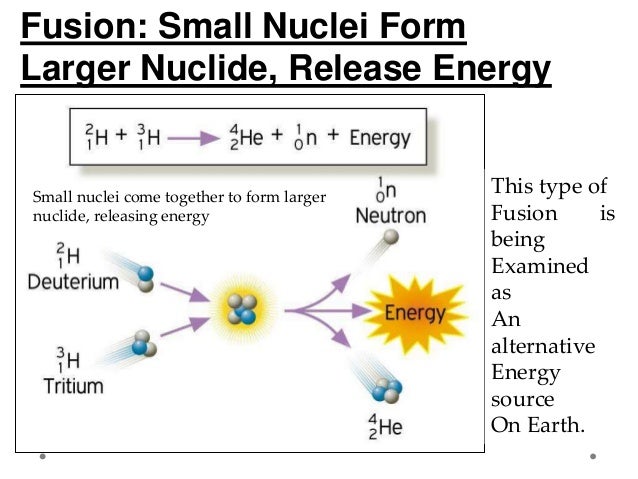


The fusion of the nuclei has to happen quickly so that the repulsion of the charges does not have time to stop it from happening.Ī way that particles can travel that quickly is by being in a hot gas or in plasma, like in the Sun. As two nuclei approach each other, they will repel because they have the same charge. However, the issue with fusion is that it requires the fusing of nuclei, which are positive particles. It is estimated that the sun releases 3.8 × 10 26 joules of energy every second. Fission releases the energy of the electromagnetic force when positively charged parts of the nucleus fly away from one another. Introduction Protons and neutrons make up a nucleus, which is the foundation of nuclear science. The consequence of fission or fusion is the absorption or release of energy. Setting the record straight on how these two similar sounding energy sources truly differ. Fission is the splitting of a heavy nucleus into lighter nuclei and fusion is the combining of nuclei to form a bigger and heavier nucleus. There are two methods of doing this: fission and fusion.
#Energy released fusion vs fission free#
Releasing this energy would free the world from having to use fossil fuels. Complete fusion of all these hydrogen nuclei would release about 17,200,000,000,000 joules (J) of energy. The Differences Between Nuclear Fission and Fusion. The nuclei of atoms contain a large amount of energy. This may not seem like a lot of energy but this energy is a result of the fusion of only four hydrogen nuclei.Ī 250 millilitre (ml) glass of water will contain around 1.6 × 10 25 hydrogen atoms. In all nuclear reactions a small amount of the mass changes to energy. Fossil fuelswhich mainly include coal, oil and natural gasfill. The energy released can be used to generate electricity. This energy is released through fission (splitting atoms) or fusion (merging of atoms to form a larger atom). The missing mass is converted to energy, which radiates away. Nuclear energy comes from the energy stored in the nucleus (core) of an atom. This means that there is a missing amount of mass equalling 0.048 × 10 -27 kg. The mass of one helium nucleus is 6.645 × 10 -27 kg.

The combined mass of four hydrogen nuclei is 6.693 × 10 -27 kilograms (kg). The simplest is when four hydrogen nuclei become one helium nuclei. There are a number of different nuclear fusion reactions happening in the Sun. Fusion reactions occur in stars where two hydrogen nuclei fuse together under high temperatures and pressure to form a nucleus of a helium isotope. Deuterium occurs naturally in seawater (30 grams per cubic metre), which makes it very abundant relative to. a On a mass basis, the D-T fusion reaction releases over four times as much energy as uranium fission. Nuclear fusion is when two small, light nuclei join together to make one heavy nucleus. Fusion - How These Energy Sources Differ The Differences Between Nuclear Fission and Fusion Setting the record straight on how these two similar sounding energy. Each D-T fusion event releases 17.6 MeV (2.8 x 10-12 joule, compared with 200 MeV for a U-235 fission and 3-4 MeV for D-D fusion).


 0 kommentar(er)
0 kommentar(er)
